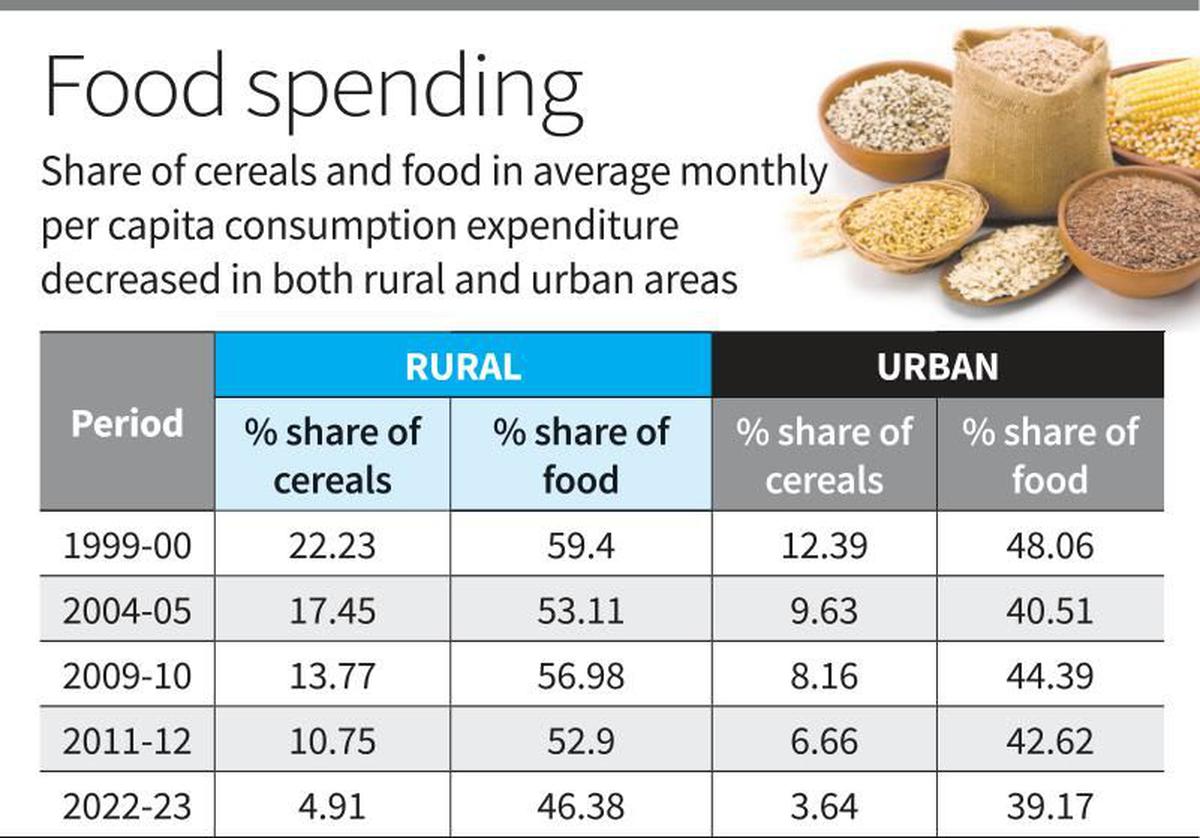As per the latest All India Household Consumption Expenditure Survey, the average monthly per capita consumption expenditure in Indian households rose by 33.5% since 2011-12 in urban households to ₹3,510, with rural India’s MPCE seeing a 40.42% increase over the same period to hit ₹2,008. File
| Photo Credit: The Hindu
For the first time in about 11 years, the government on February 24 released the broad findings of the All India Household Consumption Expenditure Survey carried out between August 2022 and July 2023. The data will play a key role in reviewing critical economic indicators, including the Gross Domestic Product (GDP), poverty levels, and the Consumer Price Inflation (CPI).
The Household Consumption Expenditure Survey (HCES) is usually conducted by the National Statistical Office (NSO) every five years, but the findings of the last Survey, conducted in 2017-18 soon after the demonetisation of high-value currency notes and the implementation of the Goods and Services Tax (GST), were never released after the government cited “data quality” issues.
As per the latest Survey, the average monthly per capita consumption expenditure (MPCE) in Indian households rose by 33.5% since 2011-12 in urban households to ₹3,510, with rural India’s MPCE seeing a 40.42% increase over the same period to hit ₹2,008.
Importantly, the numbers show that the proportion of spending on food has dropped to 46.4% for rural households from 52.9% in 2011-12, while their urban peers spent just 39.2% of their overall monthly outgoes on food compared with 42.6% incurred 11 years earlier. This reduction could translate into a lower weightage for food prices in the country’s retail inflation calculations.

The MPCE numbers cited above do not take into account the imputed values of items received free of cost by individuals through various social welfare programmes such as the PM Garib Kalyan Ann Yojana (PMGKAY) or State-run schemes, which were calculated separately, while including a few non-food items received through such schemes, including computers, mobile phones, bicycles, and clothing.
The average MPCE, at 2011-12 prices, was a tad higher when these items were included while excluding free education and healthcare sops — at ₹2,054 for rural households, and ₹3,544 for urban homes.
The Statistics and Programme Implementation Ministry released a factsheet on the summary of the Survey findings, and said a detailed report on the survey will be brought out subsequently. The estimates of the MPCE are based on data collected from 2,61,746 households, of which 1,55,014 were in rural areas, spread over all States and Union Territories, the Ministry said.
“The bottom 5% of India’s rural population, ranked by MPCE, has an average MPCE of ₹1,373 while it is ₹2,001 for the same category of population in the urban areas. The top 5% of India’s rural and urban population, ranked by MPCE, has an average MPCE of ₹10,501 and ₹20,824, respectively,” according to the factsheet.
Among the States, the MPCE is the highest in Sikkim for both rural (₹7,731) and urban areas (₹12,105). It is the lowest in Chhattisgarh, where it was ₹2,466 for rural households and ₹4,483 for urban household members.